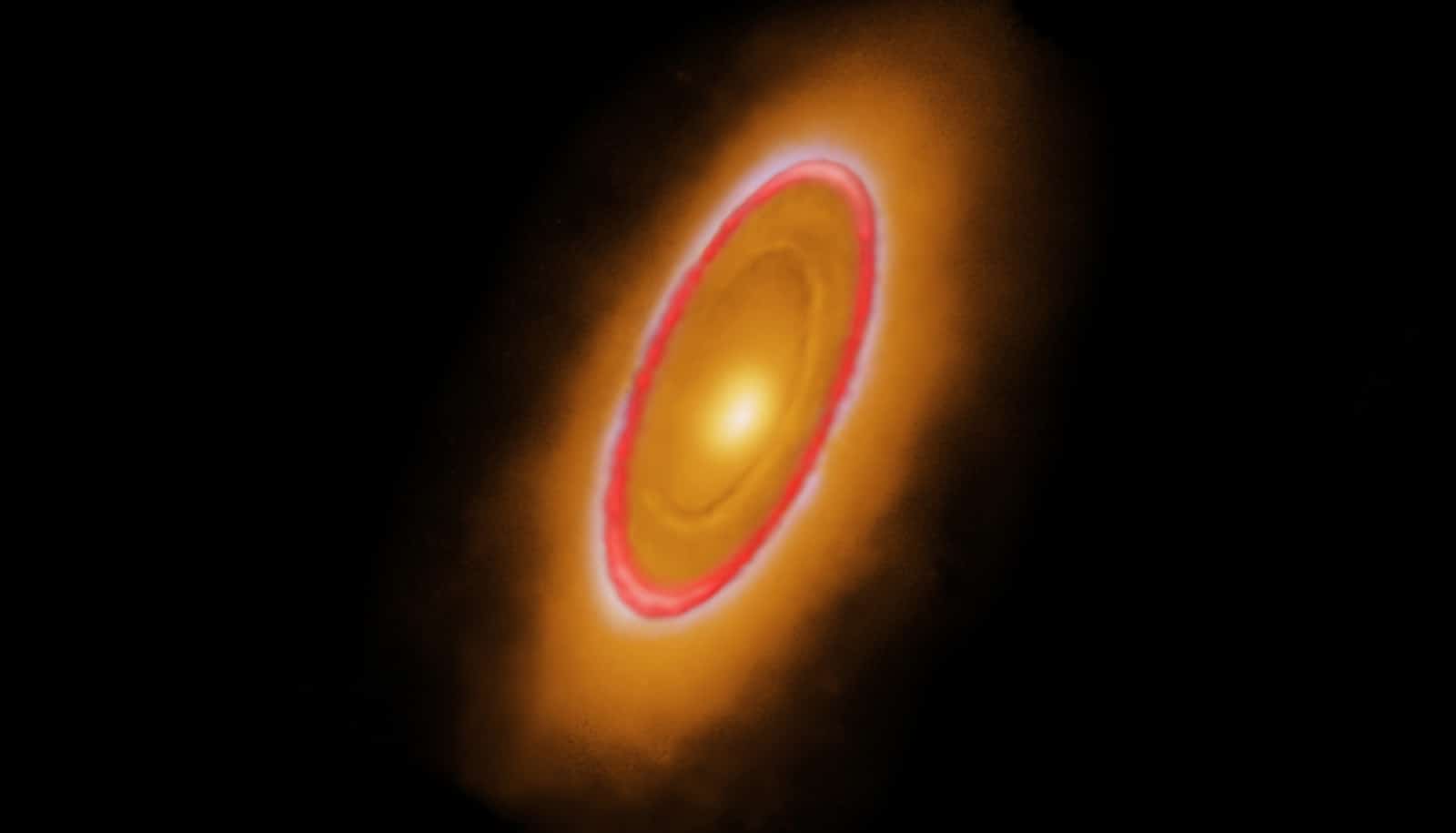A new image of the bright, nearby star Fomalhaut reveals new details, including nested rings of dust that hint at the forces of unseen planets.
A team led by University of Arizona astronomers used NASA’s James Webb Space Telescope to image the warm dust around Fomalhaut to study the first asteroid belt ever seen outside of our solar system in infrared light. These belts most likely are carved by the gravitational forces produced by embedded, unseen planets.
“The belts around Fomalhaut are kind of a mystery novel: Where are the planets?”
To the astronomers’ surprise, the dusty structures are much more complex than the asteroid and Kuiper dust belts of our solar system. There are three nested belts extending out to 14 billion miles, or 23 billion kilometers, from the star; that’s 150 times the distance of Earth from the sun. The scale of the outermost belt is roughly twice the scale of our solar system’s Kuiper belt, which consists of small bodies and cold dust beyond Neptune, the outermost known planet. The inner belts in the Fomalhaut system—which no one had seen before—were revealed by Webb for the first time. The results appear in the journal Nature Astronomy.
The belts encircle the young hot star, which is about 25 light-years from Earth and can be seen with the naked eye as the brightest star in the southern constellation Piscis Austrinus. The dusty belts are the debris from collisions of larger bodies, similar to asteroids and comets, and are frequently described as debris disks. Astronomers first discovered Fomalhaut’s disk in 1983. But there has never been a view as spectacular—or as revealing—as this one.
“I would describe Fomalhaut as the archetype of debris disks found elsewhere in our galaxy, because it has components similar to those we have in our own planetary system,” says lead study author András Gáspár, an assistant astronomer at the University of Arizona’s Steward Observatory. “By looking at the patterns in these rings, we can begin to make a little sketch of what a planetary system ought to look like—if we could actually take a deep enough picture to see the suspected planets.”
The idea of a protoplanetary disk around a star goes back to the late 1700s when astronomers Immanuel Kant and Pierre-Simon Laplace independently developed the theory that the sun and planets formed from a rotating gas cloud that collapsed and flattened due to gravity. Debris disks develop later, following the formation of planets and once the primordial gas has dispersed. As small bodies like asteroids collide, their surfaces are pulverized into huge clouds of dust and other debris. Observations of their dust provide unique clues to the structure of an exoplanetary system, reaching down to Earth-sized planets and even asteroids, which are much too small to see individually.
“Where Webb really excels is that we’re able to physically resolve the thermal glow from dust in those inner regions,” says Schuyler Wolff, an assistant research professor at Steward and a coauthor on the paper. “So, you can see inner belts that we could never see before.”
Hubble, ALMA, and Webb are tag-teaming to assemble a holistic view of the debris disks around a number of stars.
“With Hubble and ALMA, we were able to image a bunch of Kuiper belt analogs, and we’ve learned loads about how outer disks form and evolve,” Wolff says. “But we need Webb to allow us to image a dozen or so asteroid belts elsewhere. We can learn just as much about the inner warm regions of these disks as Hubble and ALMA taught us about the colder outer regions.”
These belts most likely are carved by the gravitational forces produced by unseen planets. Similarly, inside our solar system, Jupiter corrals the asteroid belt; the inner edge of the Kuiper belt is sculpted by Neptune, and the outer edge could be shepherded by yet-unseen bodies beyond it. As Webb images more systems, astronomers will gain a more detailed understanding of the configurations of their planets.
“The belts around Fomalhaut are kind of a mystery novel: Where are the planets?” says team member George Rieke, a professor of astronomy at the University of Arizona who serves as the United States science lead for Webb’s Mid-Infrared Instrument, or MIRI, which made these observations. “I think it’s not a very big leap to say there’s probably a really interesting planetary system around the star.”
“We definitely didn’t expect the more complex structure with the second intermediate belt and then the broader asteroid belt,” adds Wolff. “That structure is very exciting because any time an astronomer sees a gap and rings in a disk, they say, ‘There could be an embedded planet shaping the rings.'”
Webb also imaged what Gáspár dubs “the great dust cloud” that may be evidence for a collision that occurred in the outer ring between two protoplanetary bodies. This is a different feature from a suspected planet first seen inside the outer ring by Hubble in 2008. Subsequent Hubble observations made by Gáspár’s team showed that by 2014 the object had vanished. A plausible interpretation is that this newly discovered feature, like the earlier one, is an expanding cloud of very fine dust particles from two icy bodies that smashed into each other.
Source: University of Arizona

